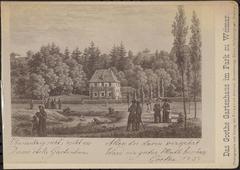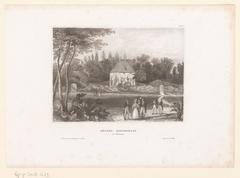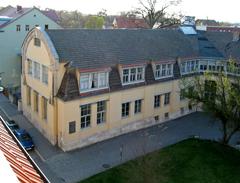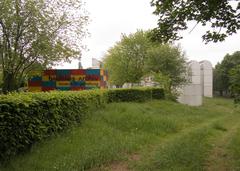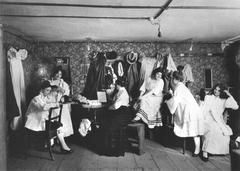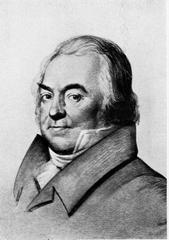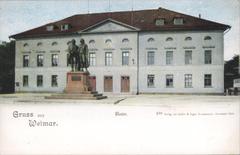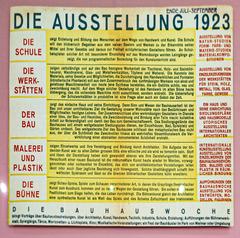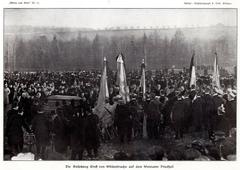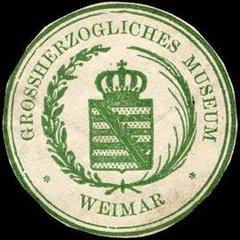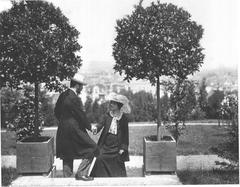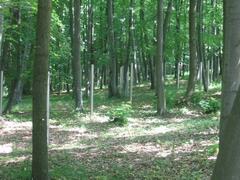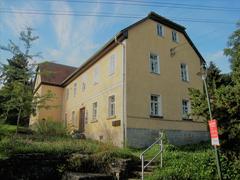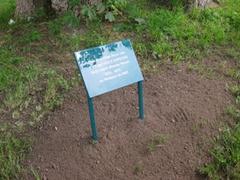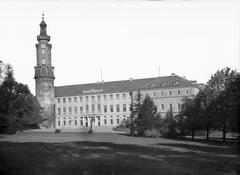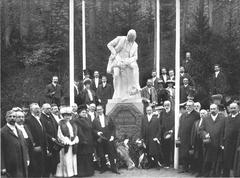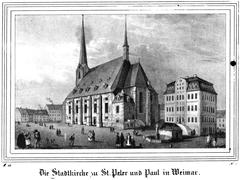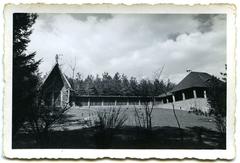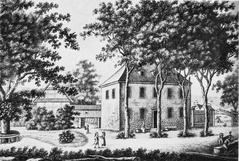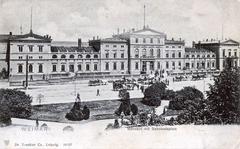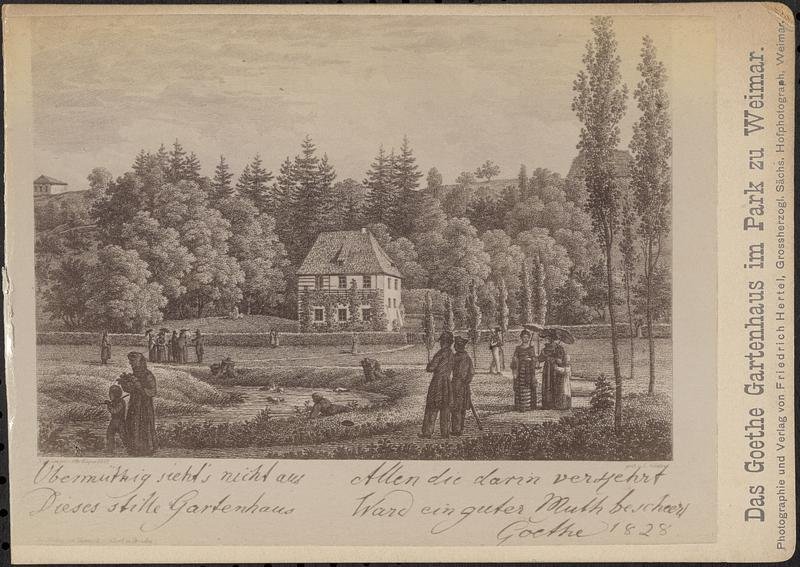
Goethe’s Gartenhaus Weimar: Visiting Hours, Tickets, and Travel Guide
Date: 15/06/2025
Introduction
Nestled within Park an der Ilm in the heart of Weimar, Germany, Goethe’s Gartenhaus stands as a living testament to the genius and legacy of Johann Wolfgang von Goethe, one of Germany’s most celebrated literary figures. This humble yet historically significant house, where Goethe lived, worked, and cultivated his passions, offers an intimate window into the origins of Weimar Classicism. Preserved as a museum and cultural monument, it invites visitors to explore authentic interiors, restored gardens, and unique memorials, all underscored by its inclusion in the UNESCO World Heritage Site “Classical Weimar” (Klassik Stiftung Weimar; Wikipedia; Google Arts & Culture). This guide provides practical details, historical context, and travel tips for a rewarding visit to Goethe’s Gartenhaus.
Contents
- Introduction
- Historical Overview
- Origins and Early History
- Goethe’s Residency and Transformations
- The Garden: Design and Symbolism
- Literary and Intellectual Output
- Later Years and Legacy
- UNESCO World Heritage and Modern Recognition
- Architectural and Museological Features
- Visiting Goethe’s Gartenhaus: Practical Information
- Visiting Hours
- Ticket Prices and Purchasing
- Accessibility
- Guided Tours and Special Events
- Nearby Attractions and Travel Tips
- Frequently Asked Questions (FAQ)
- Conclusion
- Sources
Historical Overview
Origins and Early History
Originally built as a vineyard house in the 16th century, the property reflects Weimar’s early ties to viticulture (klassik-stiftung.de). By the late 18th century, it had transitioned to orchards and kitchen gardens. In 1776, Duke Carl August of Saxe-Weimar-Eisenach acquired the estate for Goethe, officially making him the owner and providing him with a retreat along the Ilm River (de.wikipedia.org).
Goethe’s Residency and Transformations
From 1776 to 1782, Goethe made the Gartenhaus his main residence and creative sanctuary. He personally directed renovations, such as adding a wooden balcony (later removed), and furnished the home with practical, modest items. Original features include oak tables, a mineral cabinet, a unique standing desk with a “Sitzbock,” and a simple folding bed. The kitchen retains its period hearth and utensils (klassik-stiftung.de; travelwriticus.com).
The Garden: Design and Symbolism
Goethe meticulously structured the garden into three zones—terraced hillside, orchard, and vegetable beds—mirroring his interest in nature and botany. Notable plantings included roses, grapevines, and honeysuckle. The “Stone of Good Fortune,” designed with Adam Friedrich Oeser, stands as one of Germany’s earliest abstract monuments (klassik-stiftung.de).
Literary and Intellectual Output
The Gartenhaus was a crucible for Goethe’s creativity. Here, he wrote “Erlkönig,” “An den Mond,” and “Iphigenie auf Tauris,” among other works. The tranquil setting fostered Goethe’s exploration of poetry, drama, and philosophy, which became cornerstones of Weimar Classicism (klassik-stiftung.de; de.wikipedia.org).
Later Years and Legacy
After moving to the Frauenplan residence in 1782, Goethe continued visiting and maintaining the Gartenhaus until his death in 1832. It soon became a pilgrimage site for admirers and, by 1841, was opened to the public by his descendants. Restoration work in the 1990s returned its interiors to Goethe’s original color schemes and furnishings (klassik-stiftung.de).
UNESCO World Heritage and Modern Recognition
Since 1998, Goethe’s Gartenhaus has been part of the “Classical Weimar” UNESCO World Heritage ensemble, recognized for its role in the cultural flowering of late 18th- and early 19th-century Germany (de.wikipedia.org). A replica, created in 1999 for Weimar’s time as European Capital of Culture, is now located in Bad Sulza (de.wikipedia.org).
Architectural and Museological Features
The museum preserves original interiors: the “Erdsälchen” dining room, kitchen, study, and bedroom. The garden, with its terraces and symbolic monuments, embodies Goethe’s ideals of harmony between art and nature. Exhibitions showcase personal artifacts, manuscripts, and facsimiles, contextualizing Goethe’s daily life and creative process (klassik-stiftung.de; WhichMuseum).
Visiting Goethe’s Gartenhaus: Practical Information
Location and Access
- Address: Park an der Ilm, 99423 Weimar
- By foot: 10–15 minutes from Weimar city center
- By public transport: Closest stops are “Goetheplatz” and “Berkaer Straße”
- By car: Park in the city center; vehicles are not permitted inside the park (Weimar Tourist Information; Trek Zone)
Visiting Hours
- Summer (April–October): Tuesday–Sunday, 09:30–18:00
- Winter (November–March): Tuesday–Sunday, 09:30–16:00
- Closed on Mondays (except public holidays, when open)
- Last admission: 30 minutes before closing (Klassik Stiftung Weimar)
Tickets and Admission Fees
- Adults: €7.00
- Reduced (students up to 27, disabled, military, trainees, unemployed): €5.00
- Youth (16–20 years): €3.00
- Children under 16: Free
- Weimar Card: Free entry; includes 48–96 hour options for multiple sites and public transport (Klassik Stiftung Weimar; Angie’s Travel Routes)
- Tickets: Purchase online via Klassik Stiftung Weimar ticket shop or on-site
Accessibility
- Mobility: The historic structure features narrow doorways and steps; wheelchairs may have limited access. Garden paths are mostly unpaved (WhichMuseum).
- Facilities: No on-site restrooms; public toilets are available in the park and city center.
Guided Tours and Audio Guides
- Guided tours: Available for groups by prior arrangement; individual visitors can access interpretive materials. Some tours offered in English—check Klassik Stiftung Weimar for current options.
- Audio guides: Downloadable via the Audiala app or the official website.
Special Events and Virtual Tours
- Seasonal events include poetry readings, garden tours, and exhibitions. Virtual tours are available online (Klassik Stiftung Weimar).
Visitor Experience and Tips
- Time: Allocate 30–60 minutes for the house; allow extra time for the garden and park.
- Photography: Permitted in the garden and exterior; restrictions may apply indoors.
- Best time to visit: Spring and early autumn for garden blooms; early mornings and late afternoons are quieter.
- Nearby attractions: Goethe National Museum, Schiller’s House, Bauhaus Museum, Duchess Anna Amalia Library—all within a short walk (Trek Zone).
- Cafés and amenities: Found near park entrances and in the city center.
- Souvenirs: Museum shops offer Goethe-themed gifts and books.
Frequently Asked Questions (FAQ)
Q: What are the current opening hours?
A: Tuesday–Sunday, 09:30–18:00 (April–October); 09:30–16:00 (November–March). Closed Mondays except public holidays.
Q: How do I purchase tickets?
A: Online via the Klassik Stiftung Weimar or at the entrance.
Q: Is the site accessible for people with disabilities?
A: Accessibility is limited inside the house due to historic architecture; garden paths are uneven.
Q: Are guided tours available in English?
A: Occasionally; check with Klassik Stiftung Weimar or Weimar Tourist Information for availability.
Q: Can children visit?
A: Yes, children under 16 enter free but should be supervised.
Q: Can I combine my visit with other attractions?
A: Yes, the Gartenhaus is near major Weimar sites; many are included with the Weimar Card.
Conclusion
Goethe’s Gartenhaus in Weimar provides a deeply immersive experience into the world of one of Germany’s greatest literary icons. From authentic 18th-century interiors and evocative gardens to insightful exhibitions and peaceful parkland, the site offers a meaningful encounter with both Goethe’s personal legacy and the broader heritage of Weimar Classicism. Plan your visit by checking current hours and tickets on the official Klassik Stiftung Weimar website, and consider exploring other nearby cultural landmarks for a full experience of Weimar’s rich history.
Download the Audiala app for guided audio tours and keep up with the latest events on social media. Embrace the chance to walk in Goethe’s footsteps and explore the creative spirit that continues to inspire visitors from around the world.
Sources
- Goethe’s Gartenhaus, Klassik Stiftung Weimar (https://www.klassik-stiftung.de/goethes-gartenhaus/)
- Goethes Gartenhaus, Wikipedia (German) (https://de.wikipedia.org/wiki/Goethes_Gartenhaus)
- Classical Weimar, Google Arts & Culture (https://artsandculture.google.com/story/classical-weimar-germany-unesco/2gXB2AYQCtMCzw?hl=en)
- Weimar Tourist Information: Goethes Gartenhaus (https://www.weimar-touristinformation.de/goethes-gartenhaus/)
- Trek Zone: Goethes Gartenhaus, Weimar (https://trek.zone/en/germany/places/234470/goethes-gartenhaus-weimar)
- Angie’s Travel Routes: Weimar Sightseeing (https://angiestravelroutes.com/en/weimar-sightseeing/)
- Hotel Kaiserin Augusta: Goethes Gartenhaus (https://www.hotel-kaiserin-augusta.de/en/culture-attractions/goethes-gartenhaus.html)
- WhichMuseum: Goethe’s Garden House Weimar (https://whichmuseum.com/museum/goethe-s-garden-house-weimar-25411)
- Weimar Erkunden: Goethe Gartenhaus (https://weimar-erkunden.de/goethe-gartenhaus/)
- Mahler Foundation: Goethe’s Gartenhaus (https://mahlerfoundation.org/mahler/locations/germany/weimar/goethe-s-gartenhaus/)
